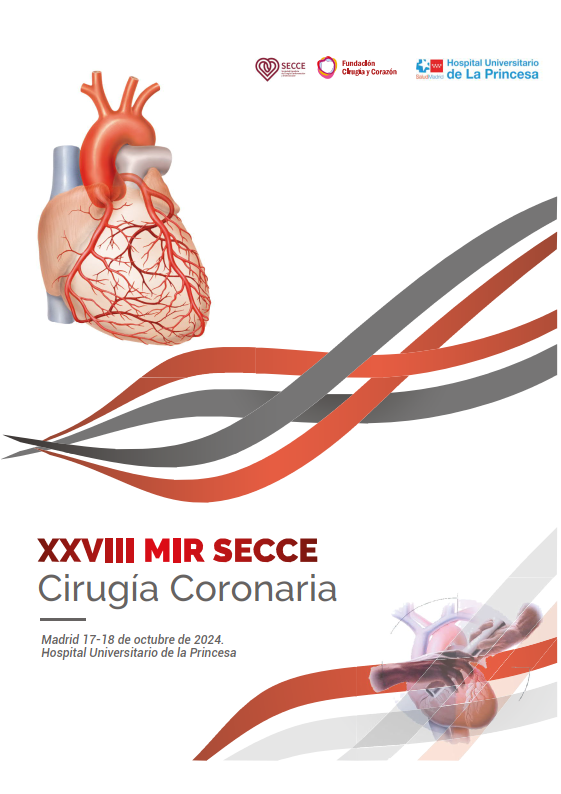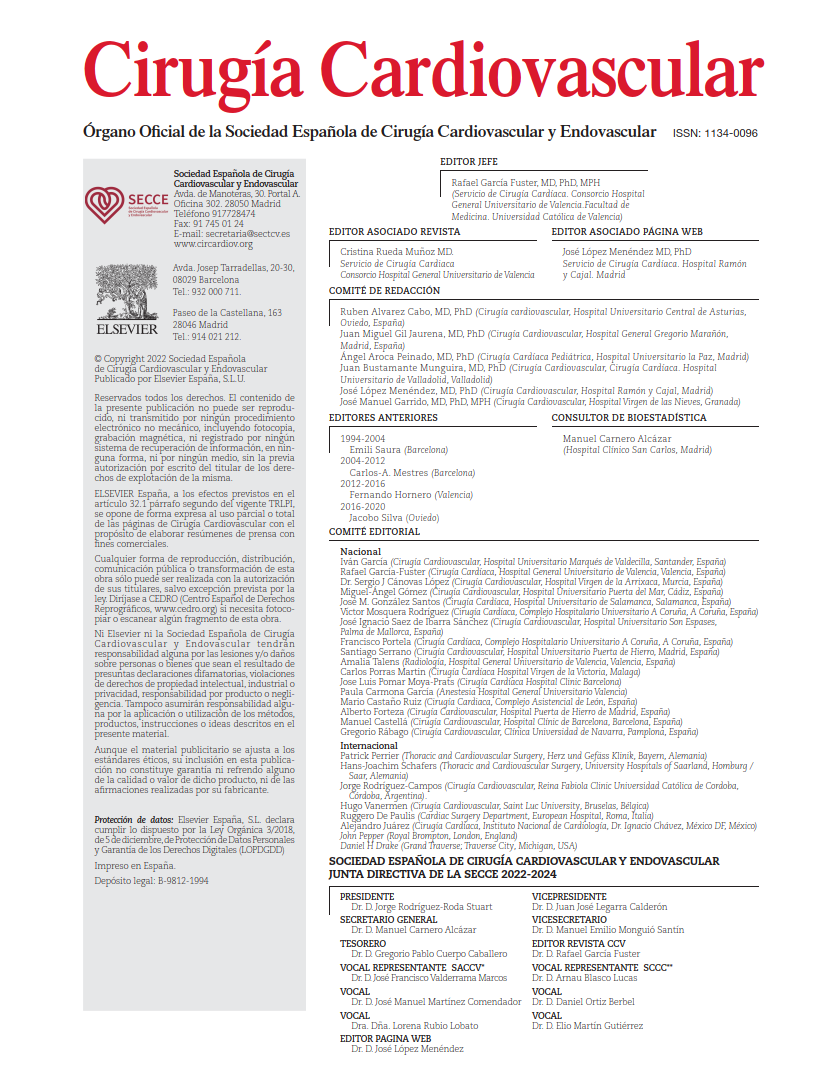Both papers, complementary and pioneering, open a critical debate on the future of pediatric valve surgery and the potential of living valves to transform clinical practice.
The management of congenital valvular disease in childhood remains one of the greatest challenges in pediatric cardiovascular surgery. Current prosthetic valves cannot adapt to patient growth, necessitating multiple reinterventions, each carrying cumulative risks of complications, functional deterioration, and mortality, which can be exceptionally high in neonates.
This scenario has driven the search for innovative solutions that enable definitive valve replacement adaptable to the patient’s growth. Living tissue valve transplantation (HVT), an idea revived after decades of experimental attempts, emerges as a potential answer. The possibility of using living valves explanted from orthotopic heart transplants (domino HVT) not only expands access to valve grafts but also offers a potential long-term solution for children with complex heart disease.
However, critical uncertainties persist: the recipient’s immune response, the requirement for prolonged immunosuppression, the risk of valve degeneration, and the logistical and ethical implications of this type of transplantation, particularly regarding procurement, allocation, and follow-up of these living grafts.
In this commentary, we review two articles:
- The original study by Kalfa et al., presenting the first pediatric case series of living valves harvested from explanted hearts during orthotopic heart transplantation, assessing their feasibility, immunologic response, and physiological growth post-implantation.
- The editorial by Downs et al., which discusses the challenges and opportunities posed by this approach, including its integration into transplant programs, uncertainties surrounding immunogenicity, long-term follow-up, and the need for specific regulatory frameworks to guide its implementation.
Kalfa et al.’s study is a single-center retrospective case series describing the initial experiences of domino valve transplantation in two pediatric patients with severe congenital heart disease. Donors were children undergoing orthotopic heart transplantation (OHT) for non-valvular conditions, allowing reuse of their aortic and pulmonary valves. The first case involved a 2-month-old girl with truncus arteriosus type 1 who received an ABO-incompatible aortic and pulmonary valve, while the second case was a 3-year-old boy with a bicuspid aortic valve and annular dilation who received an ABO-compatible aortic valve. Clinical and echocardiographic parameters (valve function, gradients, regurgitation, and growth) as well as immunologic response (donor-specific anti-HLA antibodies and circulating cell-free DNA using modern techniques such as Luminex and cfDNA) were evaluated. Follow-up extended to 15 and 17 months postoperatively.
In turn, the editorial by Downs et al. complements this information with a critical literature review, reflecting on the historical use of homografts, prior insights from transplant immunology, and the need for robust systems for regulation, monitoring, and allocation to consolidate this technique in clinical practice.
The findings by Kalfa et al. show that domino transplanted valves not only maintain satisfactory short-term function, with non-significant transvalvular gradients and trivial to mild regurgitation, but also grow proportionally to the patient’s body size, suggesting physiological integration into the recipient’s cardiovascular system. This growth capacity is particularly relevant in the pediatric population, where prosthetic adaptation remains an unmet need. However, both patients developed donor-specific anti-HLA antibodies during follow-up, especially in the second case, where titers reached high levels (>10000 MFI), raising concerns about the risk of chronic rejection or immune-mediated valve degeneration. Despite this sensitization, no signs of clinical rejection or significant valve dysfunction were observed during follow-up.
Both authors conclude that domino valve transplantation is a promising technique for pediatric patients with congenital valvular disease, offering a replacement option with growth potential, although they emphasize the need for close immunologic monitoring and long-term studies to establish the definitive safety and efficacy of this approach.
COMMENTARY:
Domino valve transplantation represents a paradigm shift in the management of congenital valvular disease. Compared to traditional mechanical or bioprosthetic valves, which cannot accommodate the child’s growth, this technique offers a theoretically definitive solution that evolves with the patient’s development. The concept of utilizing living valves from explanted hearts during orthotopic transplants is both straightforward and ingenious: transforming a surgical “discard” into a valuable source of living grafts. However, as the editorial rightly points out, the approach is not without challenges. The generation of donor-specific anti-HLA antibodies in both cases, even under immunosuppression, indicates that immunogenicity remains an unresolved concern. The absence of clinical rejection in the short term is encouraging, but progressive degeneration in the medium-to-long term cannot be ruled out, as historically seen with homografts.
Additionally, the need for prolonged immunosuppression in these patients—who are not full heart transplant recipients—raises questions about associated risks: infections, malignancies, and chronic toxicity. What immunosuppressive regimen is optimal? Can it be tailored to minimize risks without compromising valve viability? Downs et al. highlight the importance of reliable biomarkers, such as circulating cell-free DNA, to monitor graft status and detect early signs of rejection. Furthermore, they argue for the development of a regulated allocation system for these living grafts, akin to solid organ allocation, along with an international registry to track long-term outcomes and refine patient selection.
Another critical aspect is logistics: the success of this technique depends on the ability to coordinate valve procurement and implantation within a tight timeframe, supported by infrastructure that minimizes ischemia and preserves graft cellular viability. This demands close collaboration between transplant centers and pediatric cardiac surgery teams, as well as standardized protocols for graft handling, transport, and storage. Establishing interhospital networks and clear regulatory guidelines is therefore essential to expand this technique beyond pioneering centers.
In summary, domino valve transplantation opens a window of hope for children with congenital valvular disease, offering a solution that combines functional replacement with growth potential—something previously unattainable. However, widespread implementation requires addressing clinical, logistical, and ethical challenges: from optimizing immunosuppression protocols to creating equitable distribution systems and validating long-term results. Equally pressing are unanswered questions: can immunosuppression eventually be withdrawn over the years? Will the implanted valve maintain proper function in the long term despite the immune response? The field is still in its infancy, but early data are promising and justify committed investment in research, international collaboration, and the development of dedicated infrastructure. Only then can this experimental approach be transformed into a new standard of care for the most vulnerable patients in cardiovascular surgery.
REFERENCE:
Kalfa DM, Richmond M, Cordoves EM, et al. Domino heart valve transplant in children with congenital valve disease: short-term outcomes, growth, and immunosensitization. J Am Coll Cardiol. 2025;85(8):866–869. doi:10.1016/j.jacc.2024.12.008.
Downs EA, Everitt MD, Stone ML, Miyamoto SD. The dynamic equilibrium of heart valve transplantation: a balance of similarities and differences. J Am Coll Cardiol. 2025;85(8):870–872. doi:10.1016/j.jacc.2025.01.012.



